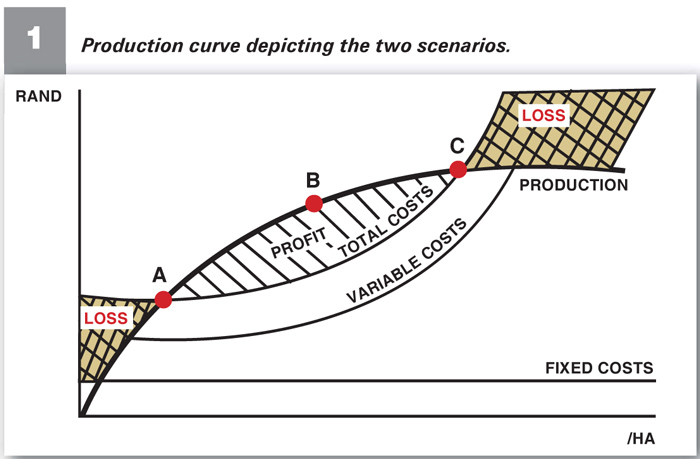June 2020
| Marius Greyling, Pula Imvula contributor. Send an email to mariusg@mcgacc.co.za |
 |
In this series of articles, we concentrate on farm management. To refresh your memories – the different areas of farm management are production, purchasing, marketing, financial management, administration (office), human resources, public relations, asset and stock management and general management such as Occupational Health and Safety.
Although the areas are mentioned separately, the areas are interrelated and whilst you may be busy managing (planning, organising, implementing and/or controlling) one area you will in all probably be busy managing one or more of the other areas. For instance, whilst you are busy with production management you could also be busy with financial management, the emphasises of this article.
To be a successful farmer you must make a profit over a long period of time by farming in a sustainable manner. This means in short, take care of the environment and other resources of your business by applying conservation farming methods. Conservation farming methods is a very relevant topic at the present time with articles in all agricultural publications. Remember, profit means all your expenditures (including private expenses) must be less than your income during a financial year or profit = income - expenditures. Costs are classified as fixed, overhead and production costs. Normally the emphasis is mostly on reducing input costs whilst overhead and fixed costs receive less attention.
In previous articles, we have discussed ways and means to increase income and reduce costs to make a profit. But there are limits to reducing costs, especially input costs. From a financial perspective you can reduce your input costs to be able to make a profit, but you could reach a point where the yield of your product/s will be influenced negatively. From a production management perspective, you could use more and more inputs, naturally at higher costs to increase yield, but you could also reach a point where the higher yield does not warrant the cost of the higher input costs. These two scenarios have been confirmed by research and is applicable to any type of farming. This affect is illustrated by a production-curve (Graph 1).

To compile such a production curve proper records are needed. At point A too little inputs are used and yield is therefore low, and a loss is made. At point C to much inputs are used with too little increase in yield to warrant the high cost of production. Thus, in between there is an area where you will make maximum profit – point B. To strive for maximum yield in view of maximum profits is not a sound practice. This practice – maximum yield – will always be to the detriment of one or more of your resources, such as the soil, water or grazing and is never sustainable over the long term.
The natural approach of farmers is to always attempt to farm better than the previous year in order to increase profits by for instances obtaining higher prices. Unfortunately, farmers are for the most price-takers. However, by increasing the yield per production unit of your product/s and increasing the quality of your product/s you could obtain better prices.
An investigation by Hughes and von Broembsen as reported in the Farmer’s Weekly of 22 February 2019 on the typical cost chain for citrus from producer to consumer confirmed that yield and product quality affected farm profits far more than any other factor. With a fair chance of correctness, one could assume that this will be applicable to all types of farming. Both the two factors are largely under the control of the farmer and determines the success or failure of a farm business. Depending on your product/s, add to this reliable supply and you could earn yourself a premium on the normal price. The practical implication for farmers is not to worry too much about price but rather to improve their production management.
Production efficiency is a key determinant of profitability. As a farmer has more control over this than over costs and pricing, it should remain a prime focus area. Farmers should thus strive to increase profitability by increasing production efficiency – yield, quality and reliable supply. But, also strive to reduce your costs as discussed in previous articles.
Do remember as farmers you are playing a money game and all science will be of no value if not used correctly. The financial impact of management decisions must always be tempered by sound financial decisions. All management areas are linked to each other and all has an influence on making sustainable profits. Should you concentrate too much on financial management it could be to the detriment of production management and vice versa. Should you concentrate too much on your production management it could be to the detriment of your finances (profit).
The lesson – maintain a balanced approach to the management of the different areas of management of your business – be a business manager.
Publication: June 2020
Section: Pula/Imvula